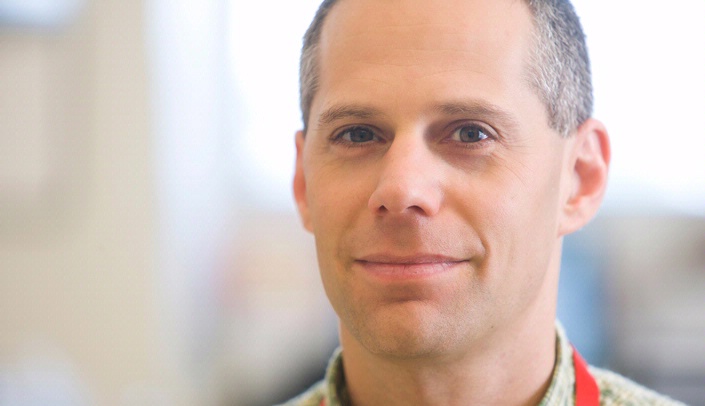UNMC researcher Steve Caplan, Ph.D., was a co-author of a study that appeared this week in the online edition of Nature Cell Biology, one of the leading science journals in the world.
The study looked at the formation of primary cilia, which are found in nearly every cell type and protrude from the cell membrane.
What are primary cilia?
Characterized and named more than 50 years ago, primary cilia were long thought to have no real function. Recent studies now suggest that primary cilia sample the environment outside the cell and mediate signals to provide stability during tissue development. As a result, defective cilia lead to a host of diseases and developmental disorders known as ciliopathies.
One such disease is Bardet-Biedl syndrome, a horrific disorder involving both developmental abnormalities such as polydactyly (extra fingers), mental retardation and developmental delay.
The study sheds new light on the process by which cilia are properly assembled, Dr. Caplan said, and may have long-term ramifications for understanding and ultimately treating ciliopathic diseases.
“The focus of my laboratory is on understanding the trafficking or movement of proteins from point to point within the cell,” said Dr. Caplan, professor, biochemistry and molecular biology. “We have extensively studied and characterized a family of proteins (called the C-terminal EHD proteins) that plays a key role in regulating protein trafficking events.”
Several years ago, Dr. Caplan’s lab proposed the novel idea that EHD proteins might regulate the movement of proteins involved in cilia formation. As with many ideas in science, they are often conceived by several groups simultaneously, Dr. Caplan said.
In this case, Dr. Caplan was contacted by the lead author of the study, Christopher Westlake, Ph.D., an investigator at the National Cancer Institute, and Peter Jackson, Ph.D., a professor at Stanford University School of Medicine and another co-author of the study.
“Since we had each just begun our studies, we decided that joining forces would be the most effective way to drive the research forward,” Dr. Caplan said.
Through combined studies on cell lines, zebrafish and mouse fibroblasts derived from animals lacking one of the EHD proteins, the study group was able to demonstrate the significance and functional role of EHD proteins in cilia generation.
Although Dr. Caplan’s laboratory is currently funded by two NIH grants, neither one specifically includes studies on cilia.
“One of the great things about science is that despite trying to ‘control everything,’ often the most fascinating ideas and discoveries are serendipitous,” he said. “This highlights the significance of funding biomedical research – the more science being done, the more likely we are to make unexpected major scientific breakthroughs.”

Good Job Caplan lab!
Congratulations to you all – Steve, Naava and other lab mates!!